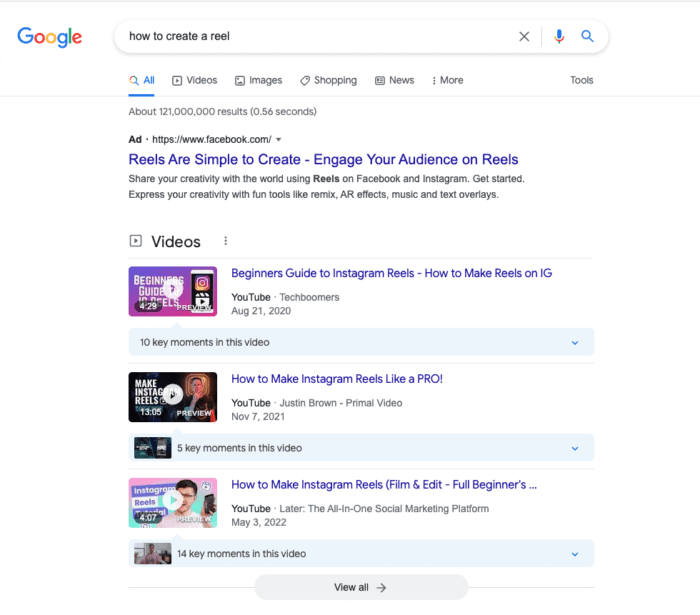This article was updated in January 2025
While certain forms of marketing content have been placed on the back burner in recent years, others have had a major facelift. Take video usage, for instance; consumers simply expect it now from all companies, big or small. Since this shift within the inbound landscape, marketers have started prioritizing and contextualizing their video content as an integral part of the consumer journey.
Here’s the downside, however. Now that video is generally accepted as a must in a company’s inbound strategy, there’s that much more noise and competition to break through. Merely producing content will not give you an automatic win for your campaign. After all, you’re not the only brand vying for consumer attention.
To help you keep up, here’s a rundown of the most common video marketing trends to remember in 2025.
But First, Why Do Videos Work So Well?
Appealing to both the auditory and visual senses, videos help get a message across more efficiently than an image or article ever could. In a time where scrolling through feeds has practically become a sport, studies have found that videos are the top leaders in capturing attention and keeping consumers engaged.
In fact, as most shoppers now look for substance when learning about a product, ads no longer make the cut. Instead, they’ll likely engage more with a brand that communicates its product offerings via authentic videos above all else.
1. Undiscovered Territory on LinkedIn
In the last few years, engagement on LinkedIn has gone up by 31%. Coupled with the fact that LinkedIn announced its newest direction towards B2B video marketing, the platform’s utility has gone beyond simple job-hunting. Marketers have discovered that videos can be an opportunity to reach potential clients AND hire quality employees.
The influence that LinkedIn videos has on engagement still remains a grey area, as many industries have yet to dabble in this content strategy. But considering that video marketing has proven to be beneficial regardless of the platform, jumping on the LinkedIn video wagon should be considered by all brands as a potential competitive advantage.
Favor short videos on trending topics or share educational content to capture the attention of your LinkedIn audience. Also, try to post a 1:1 ratio video versus a video shot in landscape mode. Square videos tend to perform better on LinkedIn and other platforms.
2. Going Live: The Best Way to Prove Your Authenticity
As mentioned, competition among brands is fierce and social media is no exception. What used to be a surefire way for a brand to demonstrate its authenticity, such as replying to comments and posting interactive content, is no longer enough.
If you’re looking for a way to land on your consumer’s social media feeds without paying, going live is a good bet. Simply put, social media algorithms will prioritize live videos because they’re happening in real time. As an added bonus, Facebook and Instagram have revealed that their live feature is the most popular and engaging format on their respective platforms.
What’s more, the live aspect of videos brings the human touch to digital marketing campaigns, hooking viewers three times longer than pre-recorded videos and producing six times more interactions. Using this method to talk about your product and even getting consumers to reserve a product during a live can be extremely advantageous during the consideration stage.
3. Search-Optimized Videos
When you do a Google search for tutorials or how-tos, you’re likely to see videos ranking higher than organic results. Having videos ranking on search engines is a great way to increase awareness about your brand or product, and be seen as a credible player in your industry. It is possible to host your videos on your website, as well as on platforms such as Vimeo and YouTube.

In the same way as a blog post, you can optimize your videos to make them SEO-friendly and increase their chances of ranking. Make sure to include relevant keywords in your title and description, for example.
4. Short-Form Videos: A Social Media Staple
If you are on Instagram, you probably noticed a major shift to video content on your feed. In order to compete with TikTok’s increasing popularity, Instagram, which used to be a photo-centric platform, is now fully embracing videos, especially Reels.
Following the same path, YouTube launched Shorts, a collection of vertical videos that are 60 seconds or less in length.
So, the time has come to shift away from static content and begin creating Reels, Shorts, and TikToks. Short-form content videos are a great way to showcase behind-the-scene shots, testimonials, educational content or product demos.
You might find some inspiration in these accounts:
5. Converting Video Landing Pages Is Indeed a Thing
With video having increased conversion rates by 80%, trust plays a major role in making that statistic a reality. When people search on Google, the persuasive copy won’t necessarily be the reason they convert, but rather the welcoming smile ready to answer any and all questions. That’s where most tend to gravitate.
A short and immediately entertaining video with a call-to-action through a lead-capture form can mean the difference between a potential sale and a slam-dunk conversion.
Your landing page might also benefit from innovative video solutions like VideoAsk, a tool designed to turn unengaging forms into one-to-one conversations. Check it out here.
One size Does Not Fit All
What works today as an inbound social media strategy may not work tomorrow. The fact of the matter is, prioritizing behaviors that increase ROI and brand value over maximizing reach is now what’s considered sustainable.
Yet, maintaining context-specific messaging for each social platform at each stage of the consumer journey while keeping up with trends can be quite the task. So when it comes to video content, it’s important to stay on top of changes in social media preferences.
Still Watching (or reading)?
With some luck, this article has, at the very least, served as a reminder of the importance of incorporating video in your inbound marketing strategy. At most, you walk away knowing the next step to take for your business.
Our experts are more than willing to answer any questions you may have and even help you build your next campaign.
Read it first:
Get new articles delivered to your inbox




Share this: